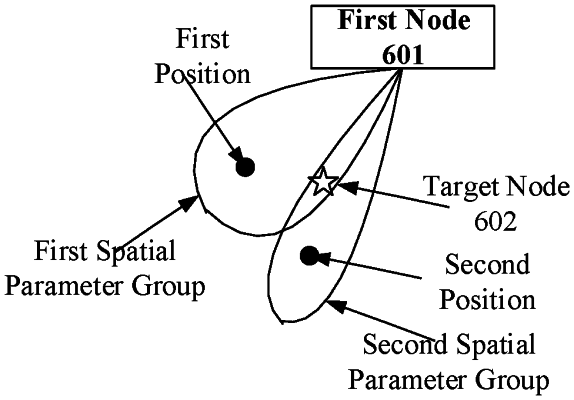| CPC H04W 64/003 (2013.01) [G01S 5/0236 (2013.01); G01S 5/0284 (2013.01); H04W 76/11 (2018.02)] | 20 Claims |

|
1. A method in a base station for positioning, comprising:
transmitting Q1 first-type radio signals, the Q1 being a positive integer and greater than 1; and
receiving second information from a LMF(Location Management Function), wherein the second information is used for triggering a transmission of first information; and
transmitting the first information to the LMF;
wherein the Q1 first-type radio signals are transmitted by Q1 spatial parameter groups respectively; the first information comprises a first Identifier (ID) and Q1 pieces of channel information, the first information includes Q1 indexes, and the Q1 indexes indicates the Q1 geographic positions respectively; the Q1 pieces of channel information are based on channel measurements performed by a target node for the Q1 spatial parameter groups respectively, and the target node is identified by the first ID; and the Q1 spatial parameter groups cover the Q1 geographic positions respectively; each of the Q1 first-type radio signals includes a synchronization signal, the synchronization signal includes a Primary Synchronization Signal and a Secondary Synchronization Signal; the Q1 spatial parameter groups are Q1 antenna port groups respectively and each of the Q1 antenna port groups includes a positive integer number of antenna ports, or, the Q1 spatial parameter groups include Q1 beamforming vectors respectively, the Q1 beamforming vectors are used for forming Q1 beams respectively, and the Q1 beams are used for transmitting the Q1 first-type radio signals respectively; the second information includes an E-CID(Enhanced Cell ID) MEASUREMENT INITIATION REQUEST.
|